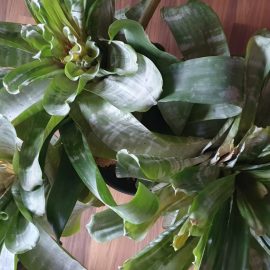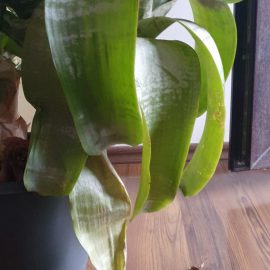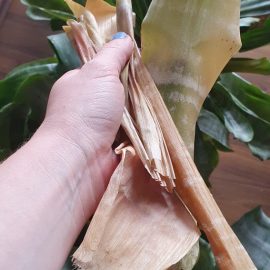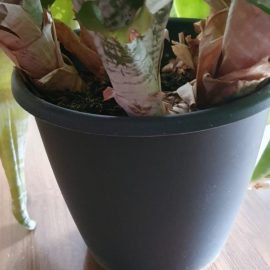Aechmea, plant care and growing guide
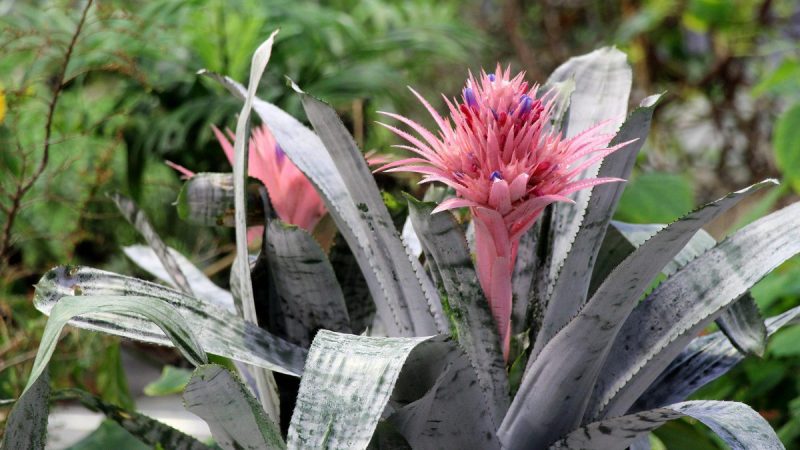
Aechmea is a genus of plants in the Bromeliaceae family that includes over 250 species of plants. They are native to Central and South America. The species differ by the shape and color of the leaves and by the inflorescences.
In general, Ecma has large, green, dusty-looking leaves with white spots or stripes. Their edge is covered with small thorns, oriented towards the top of the leaf. The inflorescence consists of pink bracts and small blue or purple tubular flowers. It lasts for up to several months. The flowering period differs from one species to another.
Species and varieties
- Aechmea fasciata. It is the most common species. It has wide and thick, green-gray leaves, with silver lines, which are arranged transversely. The leaves have fine spikes. Light pink bracts and blue flowers make up the inflorescence. A. Fasciata blooms in May-June, and the bracts last for several months. This species dies after blooming, allowing the shoots to develop.
- Aechmea chantinii. It grows to be quite large, 30 cm -1 m high and 60-90 cm in diameter. It has large, dark green leaves with light yellow stripes, arranged vertically, and silver lines arranged horizontally. The inflorescence has red-orange bracts and red flowers.
- Aechmea coelestis. It has green-blue flowers in the shape of spikes. Unlike A. Fasciata, it blooms in winter. This species also produces fruits, which are colored in blue.
- Aechmea fosteriana. It has large, glossy leaves, with colors ranging from dark green to dark purple, almost black. The inflorescence has red bracts, with red flowers, which are sometimes blue at the top.
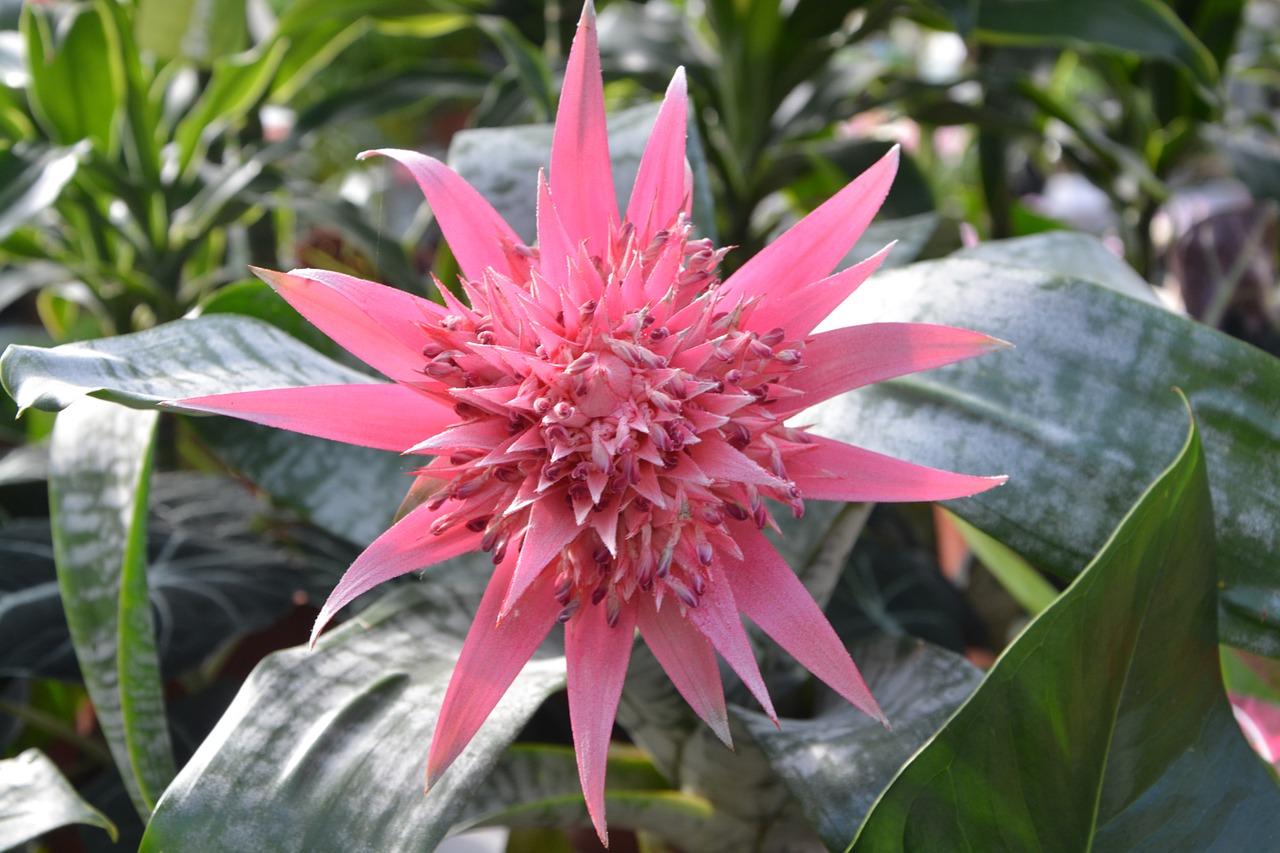
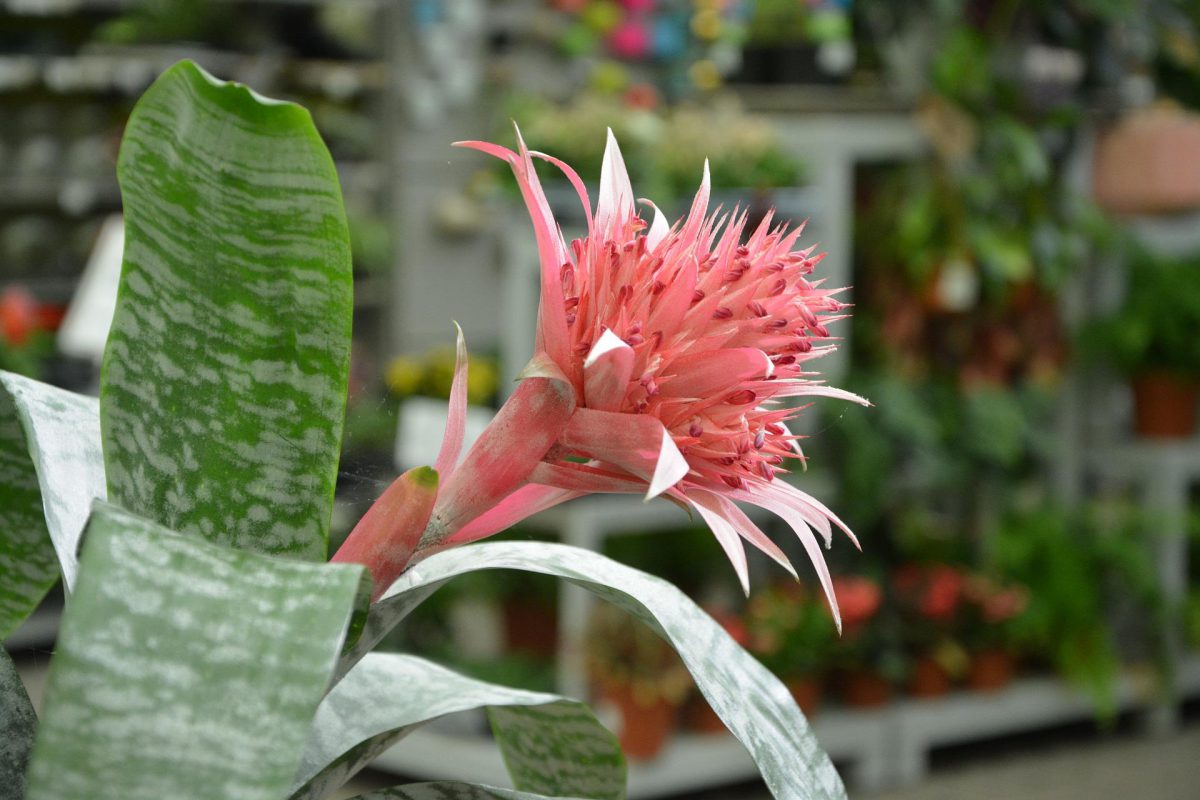
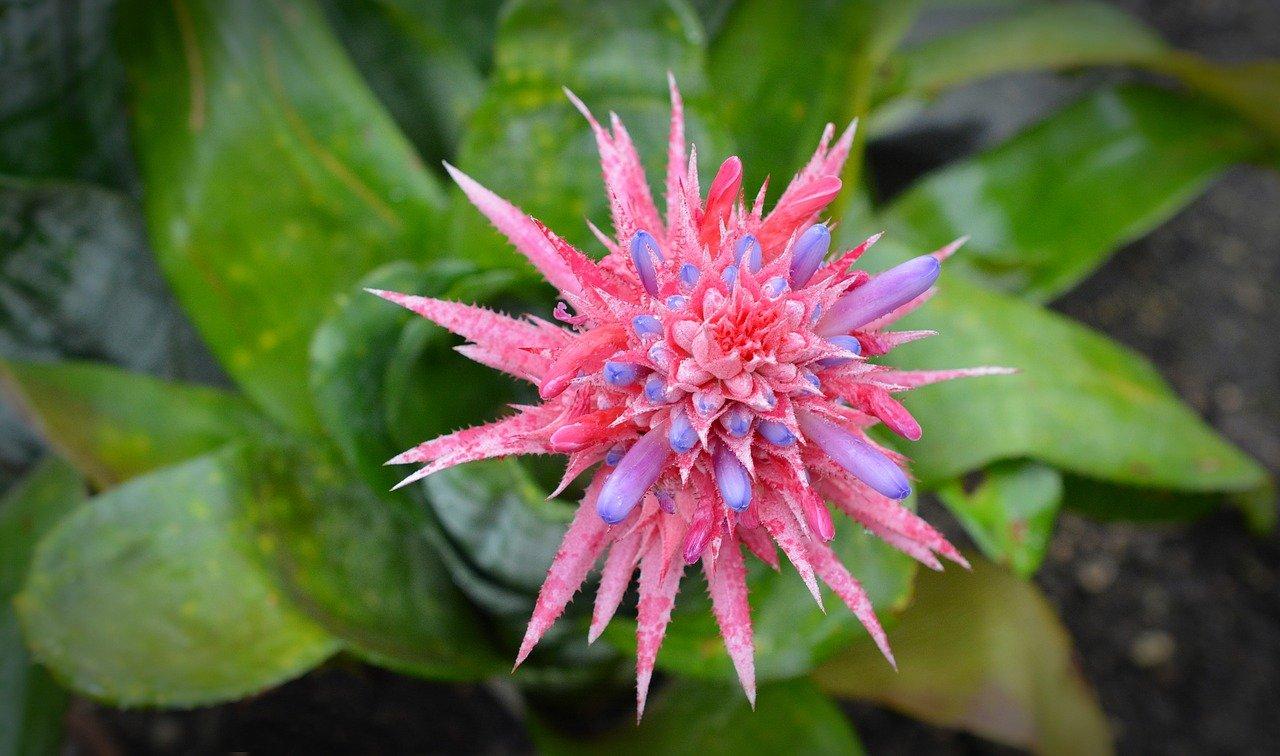
Environmental conditions
Light. They are light-loving plants, but should not be kept in direct sunlight. You can best place them near a window, in front of a curtain that blocks some of the light.
Temperature. Because it originates from tropical and subtropical areas, this plant has an optimal growth temperature between 18 and 24° C. It is a very sensitive plant to cold, so the temperature should not drop below 10° C. In winter, it can withstand very well a temperature of 15-16° C.
Moisture. It has moderate moisture requirements for the substrate and air.
Substrate. These plants grow best in a substrate made of peat and leaf mold. You can also add soil suitable for orchids.
Recommended products
-
You can find products on a different store
Change Store -
You can find products on a different store
Change Store -
You can find products on a different store
Change Store -
You can find products on a different store
Change Store -
You can find products on a different store
Change Store -
You can find products on a different store
Change Store -
You can find products on a different store
Change Store -
You can find products on a different store
Change Store -
You can find products on a different store
Change Store -
You can find products on a different store
Change Store -
You can find products on a different store
Change Store -
You can find products on a different store
Change Store -
You can find products on a different store
Change Store -
You can find products on a different store
Change Store -
You can find products on a different store
Change Store -
You can find products on a different store
Change Store -
You can find products on a different store
Change Store -
You can find products on a different store
Change Store -
You can find products on a different store
Change Store -
You can find products on a different store
Change Store -
You can find products on a different store
Change Store -
You can find products on a different store
Change Store -
You can find products on a different store
Change Store -
You can find products on a different store
Change Store
Watering
It should be done moderately. The substrate must always be kept clean and the water must drain well each time. During the summer months, it should be watered weekly, and the rosette should be half-filled with water once a month. It is very important to change the water in the rosette because stagnant water increases the risk of diseases that destroy the plant. Water it with non-calcareous water. It is recommended that you sometimes spray the leaves with water to increase the humidity. During winter, watering should be done less often, depending on the inside temperature.
Fertilization
It is done monthly during the vegetation period and during the dormancy period (in winter) it should stop.
Recommended products
-
You can find products on a different store
Change Store -
You can find products on a different store
Change Store -
You can find products on a different store
Change Store -
You can find products on a different store
Change Store -
You can find products on a different store
Change Store -
You can find products on a different store
Change Store -
You can find products on a different store
Change Store -
You can find products on a different store
Change Store -
You can find products on a different store
Change Store -
You can find products on a different store
Change Store -
You can find products on a different store
Change Store -
You can find products on a different store
Change Store -
You can find products on a different store
Change Store -
You can find products on a different store
Change Store -
You can find products on a different store
Change Store -
You can find products on a different store
Change Store -
You can find products on a different store
Change Store -
You can find products on a different store
Change Store -
You can find products on a different store
Change Store -
You can find products on a different store
Change Store -
You can find products on a different store
Change Store -
You can find products on a different store
Change Store -
You can find products on a different store
Change Store -
You can find products on a different store
Change Store
Repotting
Due to the roots of the plant, which are not very large, Aechmea should not be transplanted. However, keep in mind that at maturity the center of gravity of the plant is at the top. Thus, to avoid the overturning of the plant and in order to stabilize it more, it can be moved to a larger pot.
Propagation
After the mother plant dries and dies, it can be cut, and the shoots can be allowed to grow in the same pot. However, the shoots can be separated and moved to other pots, but only after they have reached two-thirds of the height of the mother plant.
Diseases and pests
Aechmea is sensitive to the attack of European fruit lecanium, woolly apple aphids, and mites. Plants can also be attacked by powdery mildew.
A common problem that can occur is yellowing or browning of the inner leaves due to excess moisture. The leaves might also lose their color intensity. This phenomenon is caused by the lack of nutrients, and therefore, it is recommended to use fertilizer.
Recommended products
-
You can find products on a different store
Change Store -
You can find products on a different store
Change Store -
You can find products on a different store
Change Store -
You can find products on a different store
Change Store -
You can find products on a different store
Change Store -
You can find products on a different store
Change Store -
You can find products on a different store
Change Store -
You can find products on a different store
Change Store -
You can find products on a different store
Change Store -
You can find products on a different store
Change Store -
You can find products on a different store
Change Store -
You can find products on a different store
Change Store -
You can find products on a different store
Change Store -
You can find products on a different store
Change Store -
You can find products on a different store
Change Store -
You can find products on a different store
Change Store -
You can find products on a different store
Change Store -
You can find products on a different store
Change Store -
You can find products on a different store
Change Store -
You can find products on a different store
Change Store -
You can find products on a different store
Change Store -
You can find products on a different store
Change Store -
You can find products on a different store
Change Store -
You can find products on a different store
Change Store
Recommended products
-
You can find products on a different store
Change Store -
You can find products on a different store
Change Store -
You can find products on a different store
Change Store -
You can find products on a different store
Change Store -
You can find products on a different store
Change Store -
You can find products on a different store
Change Store -
You can find products on a different store
Change Store -
You can find products on a different store
Change Store -
You can find products on a different store
Change Store -
You can find products on a different store
Change Store -
You can find products on a different store
Change Store -
You can find products on a different store
Change Store -
You can find products on a different store
Change Store -
You can find products on a different store
Change Store -
You can find products on a different store
Change Store -
You can find products on a different store
Change Store -
You can find products on a different store
Change Store -
You can find products on a different store
Change Store -
You can find products on a different store
Change Store -
You can find products on a different store
Change Store -
You can find products on a different store
Change Store -
You can find products on a different store
Change Store -
You can find products on a different store
Change Store -
You can find products on a different store
Change Store
In addition:
- to provide a suitable habitat for the plant, you can place the pot in a bowl with gravel in which you add water. Thus, the vapors will create the necessary moisture that Aechmea needs.
- an orchid fertilizer can be used to prolong flowering.
- in order for the water to drain properly, you can place a layer of gravel in the pot (at the base).
- do not plant “cuttings” very deep in the substrate, as this can destroy them.
- no cases of intoxication with this plant have been reported so far.
- you can create a special background by putting several plants together in a larger pot.
- being a bromeliad, it blooms only once. After that, the rosette progressively degrades, being replaced by shoots. When they have reached two thirds of the plant’s height, they can be carefully separated from the mother plant and placed in another substrate. They will bloom, in turn, once they reach maturity, after 3-4 years.
In conclusion, to take best care of Aechmea, put it in a bright space, protected, however, from the strong sun rays, water moderately and do not expose the plant to temperatures below 10° C.














































































































































































































































































































































































































































